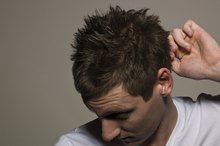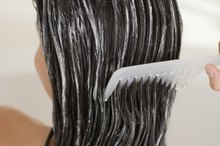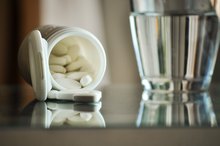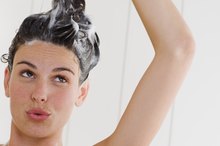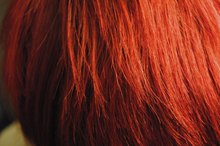Ingredients in Hair Removal Creams
Hair removal products work by breaking down the protein structure of the hair shaft. These chemical depilatories come in gels, lotions and creams and can be effective. However, some people are allergic to the chemicals in depilatories, and it’s important to carefully follow instructions on the products to prevent skin irritation.
Thioglycolate Salts and Sulfides
Thioglycolate salts and sulfides are among the common active ingredients in hair removal products 1. Some hair remover manufacturers use potassium thioglycolate in their hair removal products 1. Barium sulfide and strontium sulfide are used in some products because they react more quickly than thioglycolates, but they can also burn and irritate skin more quickly.
Sodium Hydroxide and Calcium Hydroxide
Ingredients in Colgate Total Toothpaste
Learn More
You might also see sodium hydroxide or calcium hydroxide on a depilatory label. These ingredients help to adjust pH levels, which are critical to a hair remover’s performance 1. Calcium hydroxide is now a popular choice because it was found to be almost as effective as sodium hydroxide but more gentle to the skin.
Diluents
Depilatories also need something to help dilute other ingredients in the products. Water is used most often as a diluent. It’s inexpensive, doesn’t irritate skin and is compatible with a wide range of other ingredients.
Emollients
Allergic Reaction to Hair Product: Scaly Dry Rash on Neck
Learn More
Emollients are included in hair removal creams and lotions to help reduce the harshness of chemicals in the products and make them feel better on the skin 1. Oils, silicones and esters are examples of emollients. Wired magazine reports that the number of skin-repair agents in a certain hair removal product actually outnumber the hair-removal ingredients.
Extras
To make hair removal products more appealing to use, manufacturers also include fragrances in their formulations to overcome the offensive smells of the hair removal ingredients. Emulsifiers are added to creams and lotions. Dyes are used to enhance the color. You may also see preservatives, antioxidants and extracts on the label.
- To make hair removal products more appealing to use, manufacturers also include fragrances in their formulations to overcome the offensive smells of the hair removal ingredients.
- Emulsifiers are added to creams and lotions.
Related Articles
References
- How Products Are Made: Hair Remover
- Wired Magazine: What’s Inside: Nair Hair Remover, Feel the Burn!
- University of Maryland Medical Center: Hirsutism
- TeensHealth from Nemours. Hair removal. Updated August 2016.
- National Organization for Rare Disorders. Trichotillomania.
- NIH MedlinePlus. Depilatory poisoning. Updated April 9. 2020.
- Michigan Medicine. Electrolysis for removing hair. Updated October 30, 2019.
- American Academy of Dermatology. Laser hair removal: FAQs.
- USFDA. Vaniqa™. Updated July 27, 2000.
- Hamzavi I, Tan E, Shapiro J, Lui H. A randomized bilateral vehicle-controlled study of eflornithine cream combined with laser treatment versus laser treatment alone for facial hirsutism in women. J Am Acad Dermatol. 2007;57(1):54-9. doi:10.1016/j.jaad.2006.09.025
- Hamzavi, I., Tan, E., Shapiro, J., Lui, H. (2007). A randomized bilateral vehicle-controlled study of eflornithine cream combined with laser treatment versus laser treatment alone for facial hirsutism in women. J Am Acad Dermatol, Jul, 57, 1, 54-9.
- Wanitphakdeedecha, R., Alster, T.S. (2008). Physical means of treating unwanted hair. Dermatol Ther, Sep-Oct, 21, 5, 392-401.
Writer Bio
Carol Ochs is an award-winning writer in the Washington, D.C. area. During 17 years with The Associated Press she covered health, medical and sports stories as a writer, editor and producer. She has written for the health section of "The Washington Post," a Fairfax County stewardship publication and a biopharmaceutical newsletter. Ochs has a Bachelor of Science in journalism from Ohio University, Athens.

